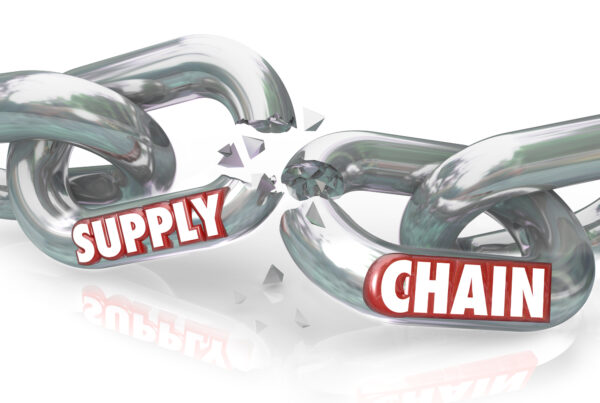Supply chain efficiency is essential for any business to remain competitive and profitable throughout its timeline. However, many companies still struggle to identify the barriers that are preventing them from achieving optimal growth. Identifying these barricades can be a challenge, but several key areas should be examined to boost supply chain efficiency.
It involves the coordination and integration of various activities and processes to ensure the delivery of products and services from suppliers to customers in a timely and cost-effective manner. However, there are yet a few potential factors that can hinder the efficiency of supply chain operations, and identifying these hurdles can be a crucial step in improving supply chain performance to boost its overall efficiency.
As suggested by experts, the very first step in identifying these barriers is to understand the various components of the supply chain, which includes understanding the roles of suppliers, manufacturers, distributors, retailers, and customers. By understanding each component’s role in the overall process, companies can better identify potential areas for improvement.
So, let’s not wait and be a rescuer for corporations to see how they can identify these barriers and improve their supply chains’ overall efficiency.
Supply Chain Barriers And Solid Reasoning to Enhance Its Efficiency
Below are the supply chain’s most common barriers with commands to rectify them:
Lack Of Visibility
One of the most common stumbling blocks of the supply chain is the lack of visibility into the end-to-end process. Without visibility, it’s difficult to identify where problems exist and how they can be addressed. To combat this issue, businesses should invest in technology like enterprise resource planning (ERP) systems or radio frequency identification (RFID) tags that provide real-time data on product movement throughout the supply chain.
Inefficient First Mile
The first mile of the supply chain is often one of the biggest challenges for companies these days. This includes everything from sourcing raw materials to ensuring that products are delivered on time and in good condition, which means short lead times, minimal customs paperwork, adequate transportation infrastructure, etc.
Achieving efficient first-mile operations requires careful planning and coordination across all stakeholders involved in the process, from manufacturers to suppliers, distributors to retailers, and customers. To ensure a successful first-mile operation, companies need to have a clear understanding of supplier capabilities and limitations, as well as any potential log jams that may occur during the process.
Lack Of Communication Between Departments
It is what affects the first mile of a supply chain the most. Poor communication between different entities in the process can lead to delays, confusion, and errors that can have a significant impact on overall performance.
To address this issue, companies should ensure that all parties involved in the process have access to accurate information and can communicate effectively. This can be improved by implementing collaborative tools such as cloud-based platforms and data-sharing systems that allow all participants involved in the supply chain to stay connected.
Poor Cross Border Trading
Another barrier that can slow down supply chains is related to importing goods from overseas suppliers. Cross-border trade requires careful coordination between multiple parties, including customs authorities, freight forwarders, shippers, and other third-party logistics providers (3PLs). Companies should work closely with their 3PLs to ensure smooth import operations and avoid delays in shipments due to regulatory issues or other unforeseen circumstances.
Moreover, global supply chains are subject to fluctuations in exchange rates which can have a significant impact on costs. Businesses should pay close attention to currency markets and use hedging strategies such as forward contracts or options to protect themselves against adverse changes in rates.
Also, numerous regulatory requirements must be met when transporting goods across borders. If companies do not comply with these rules, they could face hefty fines or even be barred from certain markets. To avoid this hurdle, businesses should work closely with freight forwarders or 4PLs who specialize in navigating customs regulations and other cross-border barricades.
Inaccurate Data
Inaccurate data can lead to delays or incorrect decisions being made by stakeholders in the supply chain. Assignmentassistance.co.uk advises freight forwarders and 4PLs to ensure all data inputted into the system is accurate so that everyone involved has access to reliable information at all times. By managing data accuracy, freight forwarders and 4PLs can work perfectly on cargo and transportation without any barriers, which will ultimately lead to improved efficiency within their operations and better customer service.
Substandard Purchase Order Management
Placing purchase orders is a time- and labor-intensive administrative task that requires the use of memos, emails, documents, and phone calls. These time-consuming operations and procedures rarely add value to businesses and are susceptible to errors and mistakes, resulting in substandard administrative procedures. To overcome this barrier, businesses need to develop relationships with reliable suppliers and invest in technology such as automated purchase order management systems to streamline their operations.
By investing in technologies like automated systems, building strong relationships 3PLs and taking advantage of hedging strategies for currency risk protection, companies can strengthen their global supply chains and boost efficiency across all stages of the process.
Labor Shortage
The labor shortage has become a major barrier to efficient supply chain management. With the increasing global demand for goods and services, companies are struggling to find enough workers to meet their production needs. This is especially true in industries that require highly skilled labor, such as manufacturing and logistics, and countries that have strict immigration policies that make it difficult for employers to recruit foreign workers. Furthermore, aging is again a leading factor that stops skilled people from entering the workforce.
However, fortunately, now there are options that businesses can take to mitigate the effects of the labor shortage, such as investing in automation and other forms of technology that can help increase productivity without having to rely on human resources.
Wrapping Up
As evident, numerous supply chain barriers can impede the supply chain’s efficiency. By identifying these hurdles and taking steps to address them, like careful planning and coordination across all stakeholders involved in the process and utilizing technology solutions where needed, businesses can improve their supply chain performance and boost their overall efficiency inside and outside of their operations.
Author Bio
 Claudia Jeffrey is currently working as an Editor at Crowd Writer, where students ask to do my assignment for me. She loves to read articles and stay updated with technological advancements.
Claudia Jeffrey is currently working as an Editor at Crowd Writer, where students ask to do my assignment for me. She loves to read articles and stay updated with technological advancements.
Claudia is a certified digital marketer who has previously worked as an SEO expert at the same firm.






